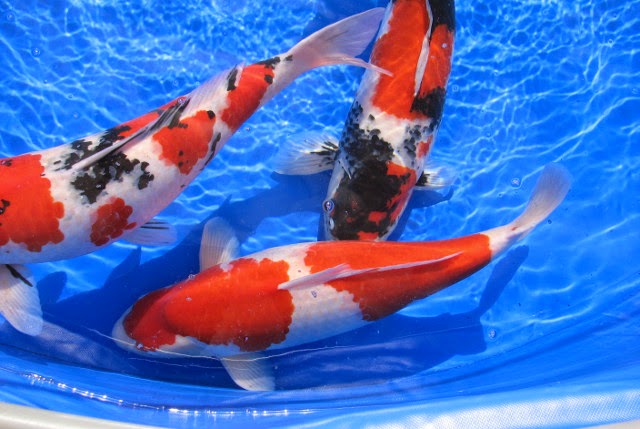1. They are illegal in the state of Maine
In 2014, a woman named Georgette Curran had her Koi forcibly removed from her residence after a failed attempt to legalize Koi keeping in her home state. Having a Koi pond and keeping Koi fish is currently legal in 49 out of 50 states. She fought all the way to the state supreme court, but was ultimately rejected when they upheld the lower court’s ruling.
2. Koi can be worth tens or even hundreds of thousands of dollars
Koi that have the perfect body conformation, skin quality, color, and pattern of color are sought after by hobbyists who want to compete in Koi shows. Competition is fierce and many will pay big money in order to gain an edge on other entrants.
3. Koi can grow up to 3 feet long
You may have only seen the small fish in the tanks at your local pet shop, but given the right conditions, Koi can grow from 2 to 6 inches a year. Before long they can grow larger than a cat or a small dog!
4. Koi can survive the winter outside in the pond
They are cold blooded and can adapt to conditions in large temperature range. During the winter, Koi go dormant and remain at the bottom of the pond where the water temperature is the warmest. A hole in the ice is required so that fresh oxygen can enter the water and carbon dioxide can exit.
5. Without a filter, they would poison themselves
Koi excrete Ammonia through their gills and in their fish waste. Without a filter to process the Ammonia, the concentration will build up in the water and their pond environment will eventually become toxic.
6. Koi come in over 200 varieties
Koi can be red, white, black, yellow, brown, grey, green, blue and have several combinations of those colors. The colors can also be non-metallic or metallic. There are even scaleless, longfin and gin rin, which is a pearlescent addition to the color for varieties of Koi.
7. They can be trained to eat from your hand
If you hold Koi food in your hand and then place it in the water while staying still, they come up and eat right from your hand. Though it may take a few days or even a few weeks for them to get used to you.
8. Koi will follow you around the pond and beg for food
They will even do it 20 minutes after you feed them. Sometimes they act like they are starving.
9. Carp were first introduced into the US in the mid 1800’s as a food source
The introduction of carp into US waterways was so successful that carp soon became a nuisance. It didn’t help that the American public isn’t too fond of the taste of carp either.
10. People keep Koi as pets on 6 out of 7 continents
Koi keeping is now a worldwide hobby. Until the 1960’s, Koi keeping was almost exclusively a Japanese practice. The advent of jet travel and polypropylene bags changed that and the hobby started spreading around the world.










ليست هناك تعليقات:
إرسال تعليق